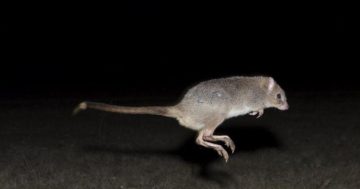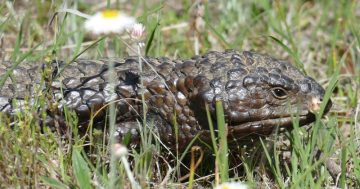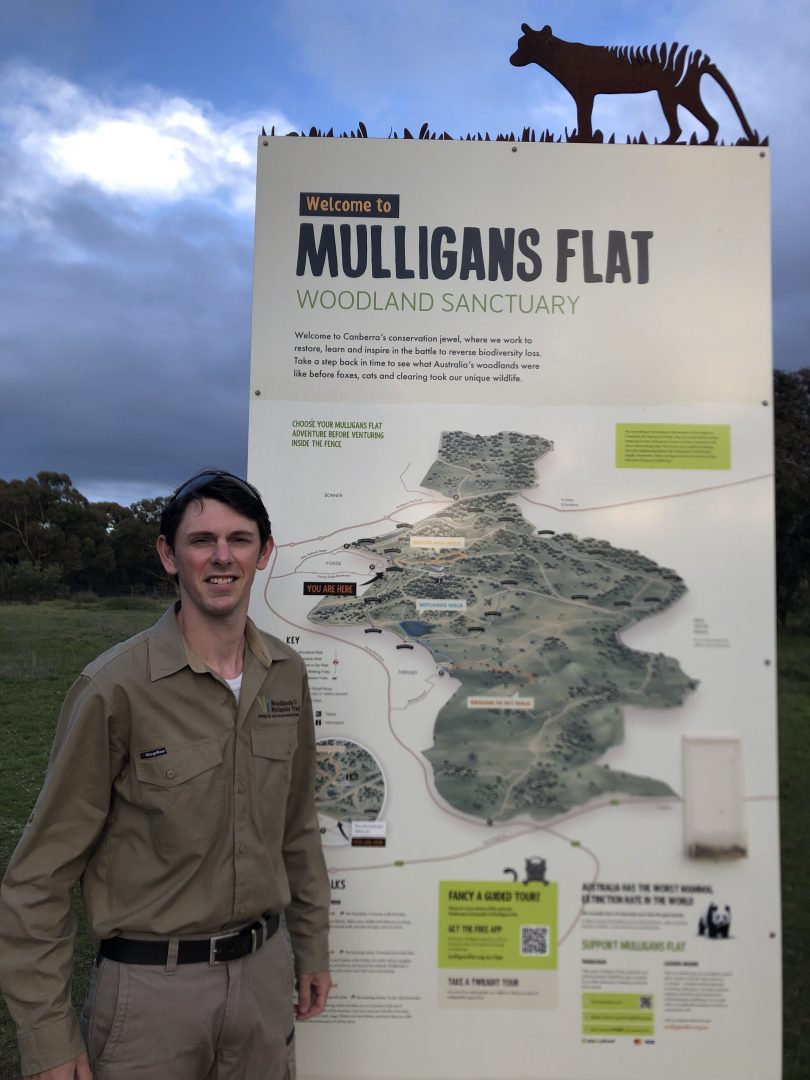
Mulligans Flat Twilight Tour guide Luke Dunn at the entry to the sanctuary. Photo: Sally Hopman.
Once you walk through the predator-proof fence, it’s like going back a century in time.
Sure, you can hear the faint hum of cars – after all, you’re only metres from one of Canberra’s most populated areas, Gungahlin – yet you could be in another world.
Mulligans Flat Woodlands Sanctuary, at Forde, has just restarted its Twilight Tours following the COVID-19 lockdown. For about two hours, and 4km, you are taken on a guided walk of the largest box gum grassy woodlands ecosystem in Australia.
From the red torchlights you follow to the genuine enthusiasm of the guide, it’s a sanctuary for the mind and soul as well as the endangered species it houses.
Mulligans Flat outreach officer Luke Dunn, who has been doing the walks for about two years, says how delighted he is to be back in the sanctuary.
“It really is the most special place,” he says, opening up the predator-proof fence for us.
“I just love doing these tours. Sometimes people come to learn, and sometimes they just want to have a walk. But it’s always special.”
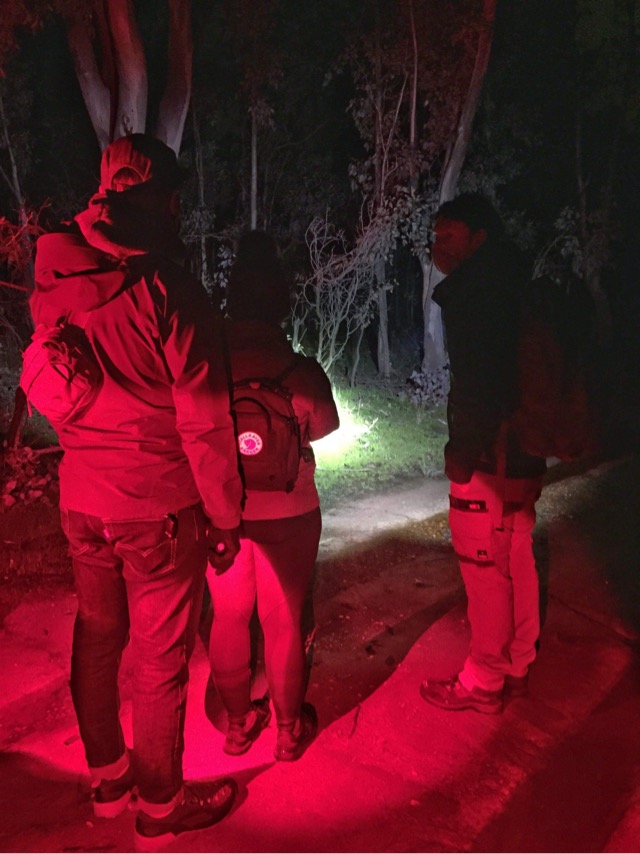
Visitors carry special torches so they can see in front of them but don’t spook the night critters during the Mulligans Flat Twilight Tours. Photo: Erica Ryan.
The surrounding fence – which has three different strands to deter predators such as cats, rabbits and foxes – goes right around the sanctuary. It needs to be strong to protect the thousands of animals and birds inside, many of which were endangered before coming to live in the safest of environments.
Luke says the fence is escape-proof, except in the case of one wily echidna.
“There was this one echidna who wanted to join the echidna train – you know, the one that happens at a certain time of the year,” he says. “Well, there was no stopping this one. He busted through somehow.”
On the Mulligans Flat Twilight Tours, you are armed with a special red-light torch which shows the wildlife around you without disturbing it too much. You walk for about 4km through the sanctuary, stopping where the guide spots something of interest.
One of the attractions of the tour for both visitors and the guides is that you rarely see the same thing twice.
Going with an experienced guide shows you things you may ordinarily walk over, such as why a certain section of leaves shows a little disturbed area – because a quoll has probably been there.
Or why great clumps of cut wood, which look like they’ve been dumped in the wrong place, should never be moved.
“People see these logs here and think they’re out of place and should be moved,” says Luke. “The worst thing you can do is remove them as 375 different species of beetle came with the trees. The beetles help decompose the logs, act as a slow release fertiliser, as well as providing lots of habitat for some of the animals. If you remove them, you take away their food.”
When it comes to popular attractions at the sanctuary, it’s usually the quoll that takes out top honours. Luke says seeing a quoll is like seeing gold.
The night I’m there, we see an eastern bettong. Well, we see it run away but that still counts.
“The bettongs we have here came from Tasmania,” says Luke. “The ones left on the mainland took a big hammering when all the grasslands were cleared and new predators were introduced. But here they’re safe.
“There was even a bounty on them at one time; people got paid to shoot them.
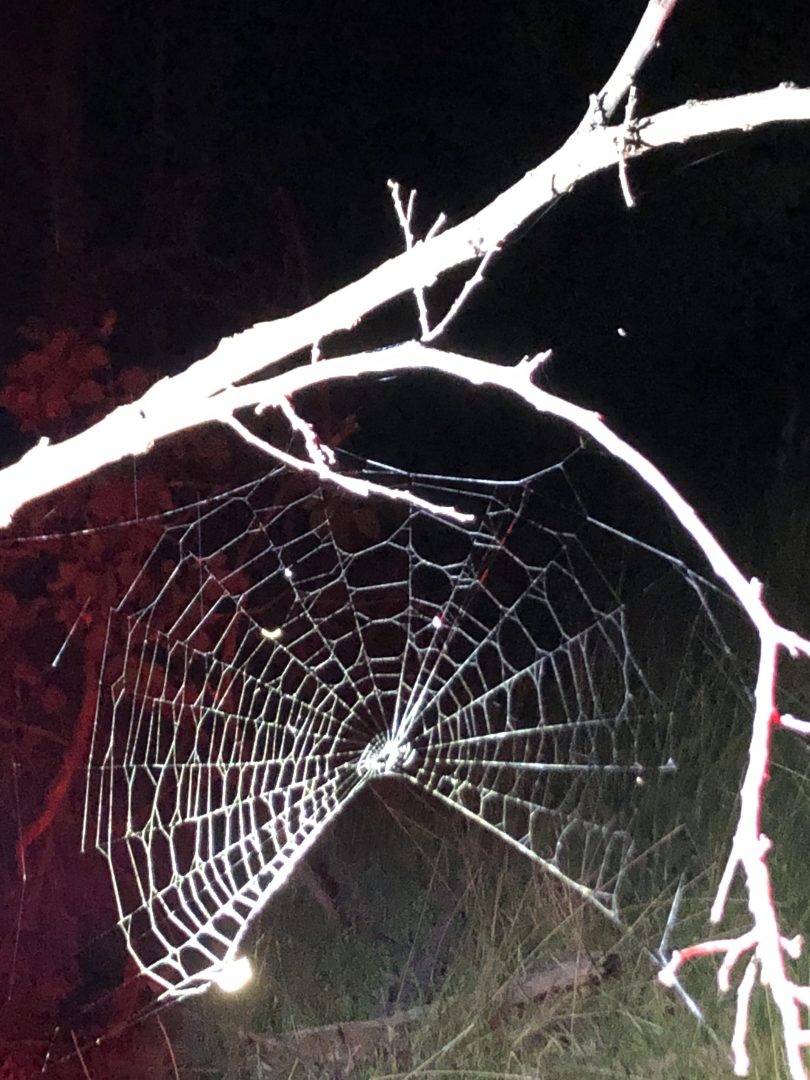
Everything comes to life at Mulligans Flat from twilight, including the most industrious of spiders. Photo: Sally Hopman.
“In 2012, we had 32 [bettongs] come here from Tasmania, all wild caught, and we’ve had a 100 per cent success rate with them here. We believe they number about 200 now.”
We also see a bush stone-curlew being tracked by two babies. When Luke sees it up ahead, he directs us to stop, not to speak and just simply watch so we don’t spook her. Turns out he can see she has two babies in tow and won’t run away because the babies are with her.
We all quietly take numerous photos to capture the moment.
Mulligans Flat is swarming with critters of the night, from swamp wallabies and kangaroos who greet you at the fence, to brush-tailed possums who wander around like they own the place – which they invariably do – slender-tailed dunnarts and scores of wise old owls.
Mulligans Flat Twilight Tours run on Monday, Friday and Saturday nights from 7 pm, with all proceeds going back to help the animals and their sanctuary.
For more information, visit Mulligans Flat Woodland Sanctuary.
Original Article published by Sally Hopman on The RiotACT.




